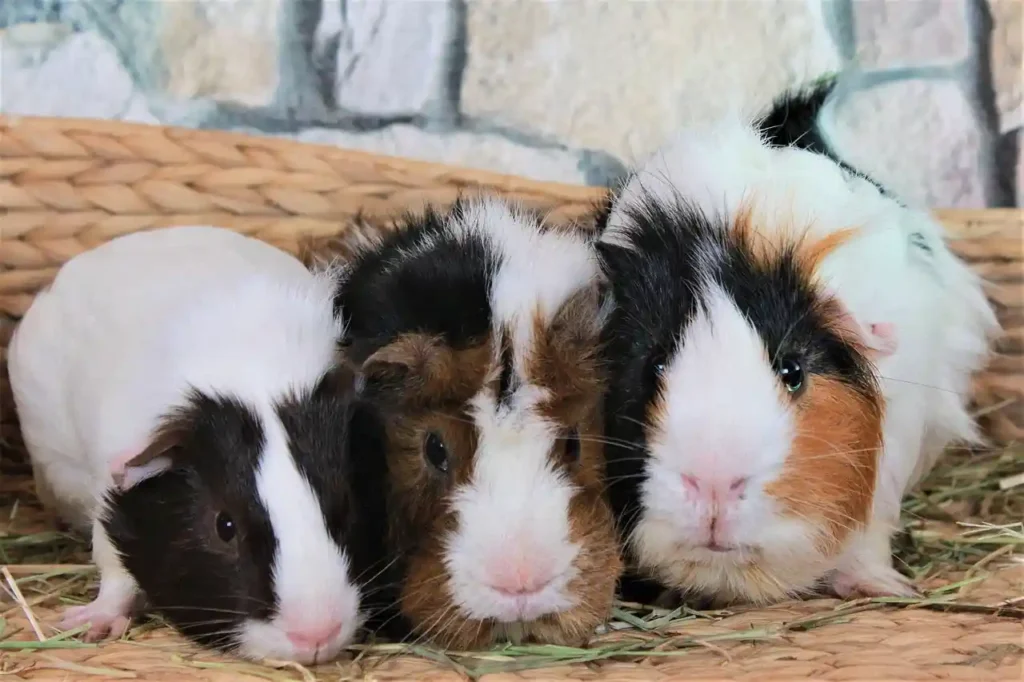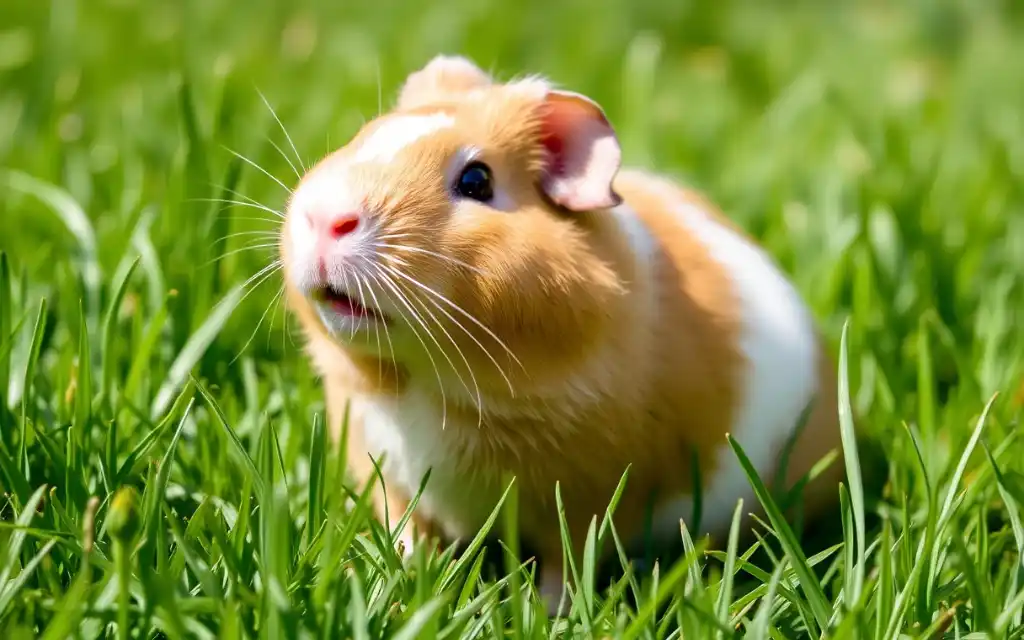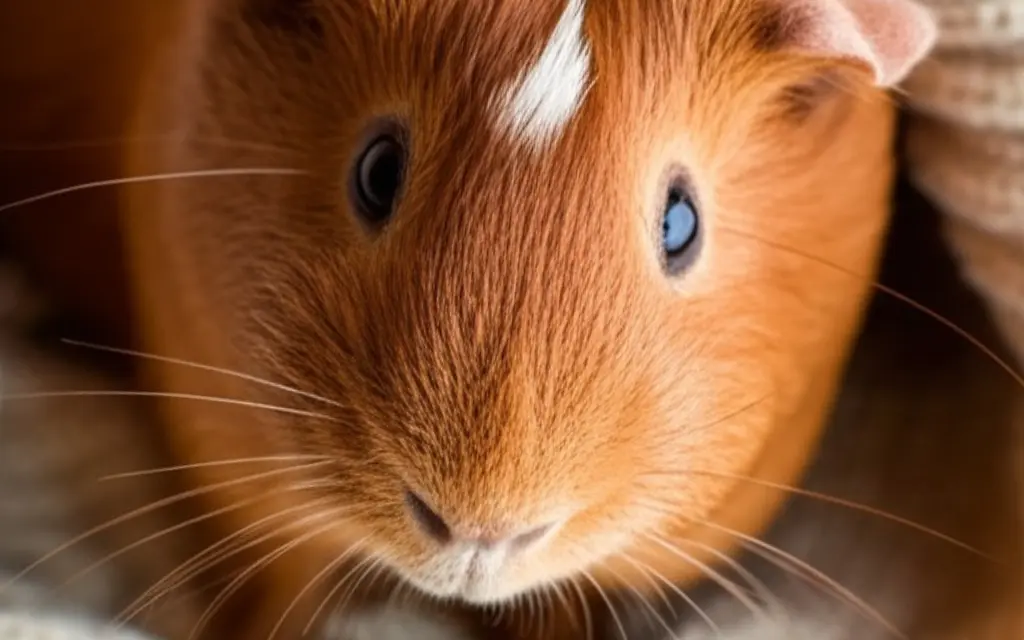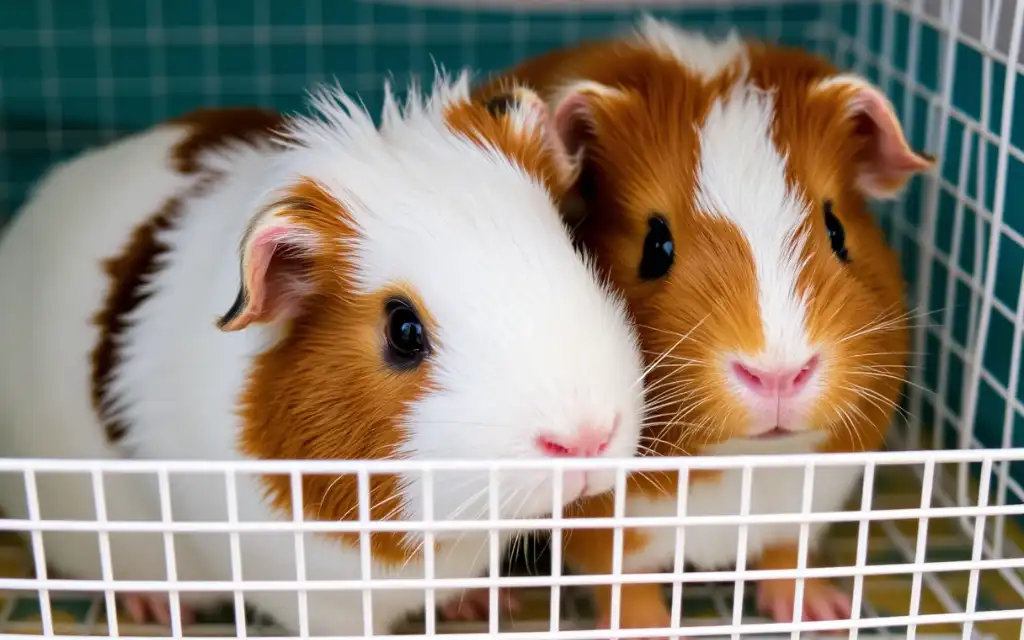Guinea pigs often fight when kept together in the same enclosure. However, fatal fights are rare. New piggy parents may get worried if they hear loud squeals and see fur flying after keeping a pair of guinea pigs together.
Most piggies chirp and play with each other happily when kept in the same place. Even if they sometimes fight, fatal fights can happen only under extreme circumstances.
This post will guide you with proper care and bonding with your furry companion so that you can foster a harmonious herd. Here, you will get to know everything about how to prevent aggression and keep your pet safe.
Understanding the social behavior of guinea pigs

Even though guinea pigs are social animals, their relationships face ups and downs. Here’s more about their natural behavior.
Normal behavior
- Mounting: It is common during introductions. Making brief attempts to assert hierarchy.
- Rumblestrutting: It is a sign of dominance by making a low purring sound while swaying side-to-side.
- Nipping: Gentle nipping is not an attack but a warning. It does lead to injury or bleeding.
When there is danger
These tiny piggies get aggressive when fights last longer than a few seconds. In this situation, one guinea pig relentlessly attacks or corners another. Biting becomes vulnerable and forceful, targeting areas such as the stomach and eyes.
Can guinea pigs kill each other?
Guinea pigs can kill each other only in preventable and extreme situations. Here’s the shocking truth.
Warning signs are ignored: Before extreme and fatal fights, your piggies show different signs. Ignoring minor scuffles can lead to deadly fights.
Too much crowd: Guinea pigs can become territorial if they are forced into tight spaces with other piggies.
Pairs that are mismatched: Keeping pairs together that do not match, like a sick pig with a healthy one or two dominant male piggies, can cause deadly fights.
What are the top reasons for a guinea pig fight and ways to stop it?

Addressing the root causes can help you prevent extreme fights. Here are some causes you need to know.
| Cause | Fix |
|---|---|
| Scarcity of resources and competition for water, food, and hiding spots. | Provide 2 water bottles, 2 food bowls, and several hideouts for a pair of piggies. |
| Pairing shy piggies or mismatched personalities with highly dominant ones. | Try to pair the piggies of the same sex with complementary temperaments. Keeping a young, submissive piggy with a calm older one can be a good idea. |
| Territorial disputes can be one of the most common causes. Introducing new piggies too quickly or invading another space. | A neutral territory, like a playpen or bathtub, can be the best place to introduce pairs. |
| Frustration, boredom, and lack of mental peace. | Adding enrichments like foraging toys, chew toys, and tunnels can make your pet more active and happy. |
| A stressed-out or sick piggy may lash out due to pain and frustration. | Isolate sick piggies temporarily and go for regular vet check-ups. |
What are some signs of aggression in guinea pigs?
Check out the list shared below to determine the severity of aggression.
Normal signs
Fights of about 10 seconds are normal. If you notice your piggies mounting occasionally and rumblestrutting without biting then be sure the fight is not very serious. So, instead of interfering, let them work it out.
Danger signs
Signs like teeth chattering, relentless chasing, arched backs/puffed up fur, and injury or bloodshed can be dangerous and fatal. So, intervene immediately if you notice any of these signs during their fights.
How to prevent deadly fights?

A stress-free habitat and proper care tips can be the best defense. Here are the guidelines.
Proper cage size
- The cage size should be a minimum of 10.5 sq ft ( 30 * 50 inches) for 2 guinea pigs.
- For 3 piggies, the cage size should be 13 sq ft ( 30*62 inches).
- Multi-level cages may fall during fights and cause severe injury to your furry friend. So, avoid using it.
Set up a habitat for stress-busting
- Go for paper or fleece bedding. Avoid wire flooring.
- Hideouts should not have a single entrance or exit. Use open-ended huts.
- Always place the cages away from loud appliances and keep them in quiet areas.
Follow a daily routine
- To reduce competition for food, feed the rodents at the same time daily.
- Built-up waste can increase tension and stress. So, spot-clean the cages regularly.
How does bonding with your guinea pigs create trust?

A strong bond with your piggy can make them calmer and less aggressive. Here’s the tool for peace.
Daily interaction
- Speak softly: During handling these furballs, use a high-pitched soothing voice.
- Hand-feed: Feeding with your hand can help your tiny pet to trust you. Offer veggies like bell pepper or cilantro for a stronger bond.
- Lap time: During lap time, gently pet their heads after wrapping them in a towel. Always avoid sudden movements.
Enrichment ideas
- Supervision: Supervise during floor time and let your piggy explore a pig-proof room along with you.
- Obstacle courses: Use PVC pipes and cardboard boxes.
- Foraging games: Use crumpled paper to hide treats and let them find out.
Emergency steps to prevent fights
Fights can break out even with precautions. Here’s how to act.
Step 1: Safely separate the piggies
Pick up and place each piggy in a separate cage after wearing thick gloves. To disorient the aggressor, throw a towel over him/her.
Step 2: Check for injuries
Assess scratches, limping, or bites and apply a saline solution if the wound is minor. To treat severe injuries, visit a vet.
Step 3: Slowly reintroduce
Before reintroducing your piggy in neutral territory, you need to wait for at least 1 to 2 weeks. Even after reintroduction, you need to monitor closely for 24 hours or more.
Conclusion
Proactive care and awareness can prevent fatal fights. By reducing stress, building trust, and providing enough space, you can stop the extreme fights that make these little pets kill each other.
Never grab fighting pigs bare-handed always use a towel or oven mitt to separate them. Preventing fights starts with addressing the root causes, and 90 % of fatal guinea pig fights occur in cages below the minimum size requirement.
Decoding dominance behaviors to emergency protocols can keep your beloved pet happy and far from harm, as “dominance is normal, Violence is not”.
